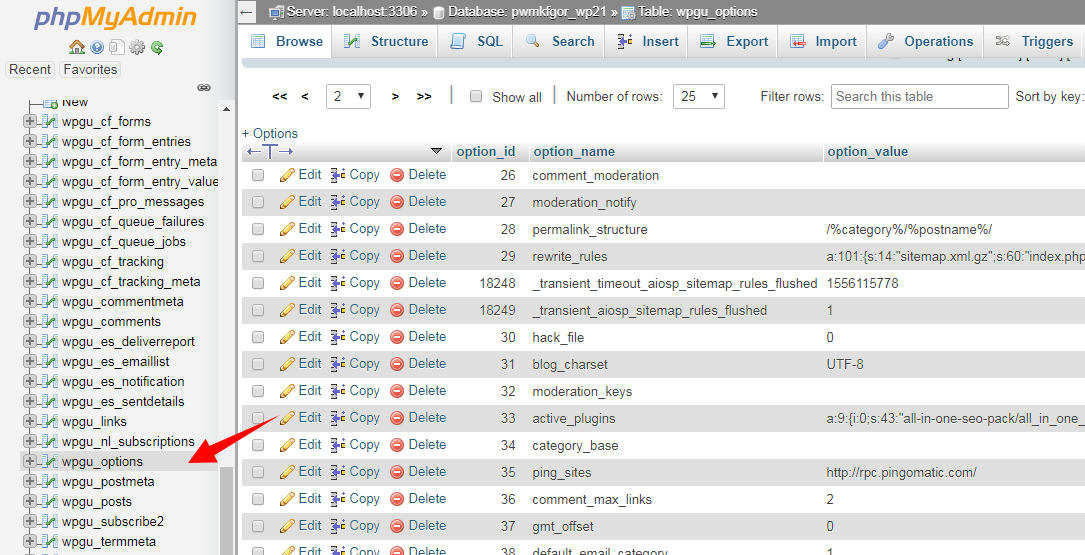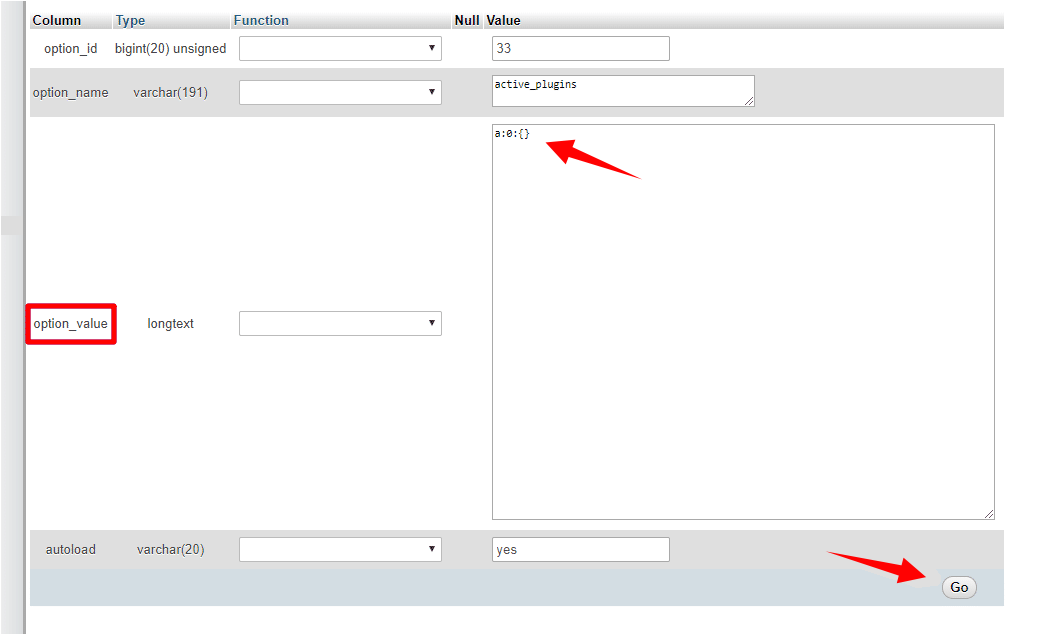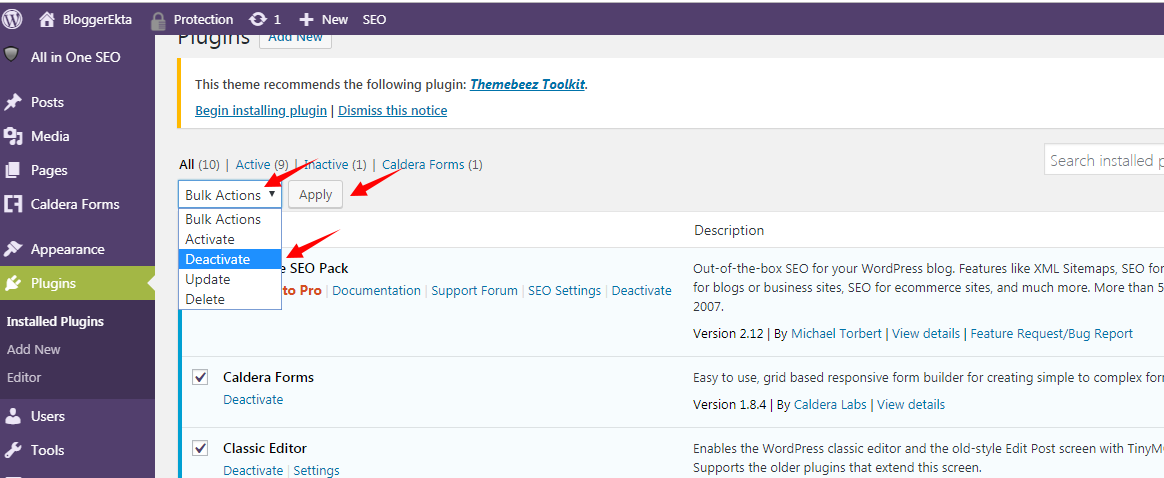If you’re using WordPress then it’s obvious that you must have installed plugins and themes to make your website or blog appealing for visitors.
But in future, if you want to disable the plugin without accessing the WordPress Admin because of any reason, then you may face difficulties for disabling the plugin.
In such a case, you can implement below mentioned steps for disabling the WordPress plugins without accessing the WordPress Admin.
How To Disable WordPress Plugins Via FTP
As we have discussed before that if you’re not able to disable the plugin from your WordPress dashboard then you can do it via FTP. Check below-mentioned steps and implement accordingly.
Step 1: Connect Your Website Via FTP
For connecting your website via FTP, you require:
- The FTP program.
- Your FTP credentials like server IP, cPanel username and password.
After fulfilling all the required details like:
FTP host – your domain name
Username – cPanel username
Password – cPanel password
Port – 21
Step 2: Click on wp-content Folder
Next, you have to double click on public_HTML ==> wp-content folder.
Step 3: Rename Plugins Folder to plugin_old
In the wp-content folder, you’ll get a folder named as plugins. Right click on that folder and rename it to plugins_old:
After changing the name, it will look like this:
 Here, you are done. Your list of plugins will get disabled after renaming the folder.
Here, you are done. Your list of plugins will get disabled after renaming the folder.
Step 4: Again Rename the Plugins_old Folder to Plugins
In this step, again you’ve to rename the plugin_old folder to its original name that is plugins.
 After completing all the steps, you have to manually reactivate plugins as per the demand.
After completing all the steps, you have to manually reactivate plugins as per the demand.
How To Disable WordPress Plugins Via phpMyAdmin?
Many WordPress users consider FTP process for disabling the WordPress plugin. You can also do it through phpMyAdmin. Check below steps for the same:
Let’s take a look at the steps that you’ve to follow to disable the plugin via phpMyAdmin.
Step 1: Operate phpMyadmin
Being a MilesWeb user, you can operate phpMyadmin from your cPanel. Login to your cPanel ===> click on phyMyadmin.
Step 2: Click on Options Table
After this, click on options table and over there click on wp_options.
Step 3: Edit active-plugins Term
After clicking on wp_options, you’ll get an option may be on a 2nd page called “active_plugin”. After finding the same, you can click on Edit option.
You’ll be redirected to the interface where you can edit and enter a:0:{} in the option_value and click on Go.
Yes, finally your website plugins will get disabled. You can also do it manually from your WordPress dashboard.
Easy Steps to Disable WordPress Plugins From wp-admin Dashboard
You can easily access your wp-admin dashboard area but don’t know the ways to disable the WordPress plugin from your wp-admin dashboard then follow these steps:
1. Steps to Disable a Single Plugin From WordPress Dashboard
First, you have to click on Plugins in your dashboard sidebar. Simply click on the Deactivate button below the name of a particular plugin that you want to disable.
By doing this, your plugin will get disabled easily. If you want to delete the plugin from WordPress website then again click on Delete button to delete a particular plugin. Under the Inactive tab, you’ll get a list of inactive plugins.
2. Steps to Disable Multiple Plugins From WordPress Dashboard
In case, you want to disable multiple plugins instead of clicking one by one then do it by selecting Bulk Actions ===> select plugins which you want to disable ====> click on Apply.
Just by clicking on Apply button all your plugins will get disabled.
Learn to Disable WordPress Plugins Via WP – CLI
Last but not least, this technique is useful to disable the WordPress plugin via WP – CLI that is a command line interface for operating WordPress. If you’re interested to know more then install the WP – CLI plugin. After successful installation of the plugin, you can launch WP – CLI commands for disabling the plugin.
At the initial stage, you require the name of the plugin. This is because the name of the plugin that is used for WP – CLI is folder name on the repository or Git. For example: here we will take a popular SEO plugin: All in One SEO Pack.
Else, you can access the following command to know the exact list of active plugins.
For disabling the single plugin you can use the following command:
For disabling the multiple plugins you can use following command:
And it’s done!
You must be thinking that WP – CLI is quick and easy to implement. Yes, it’s easy when you practice it regularly. Plus, it is the best technique to manage your WordPress installations, plugins and installs.
Final Words
These are easy steps that you can implement to uninstall the plugin. I hope you must have enjoyed learning these above-mentioned techniques for disabling the plugins without accessing the wp-admin dashboard.
























